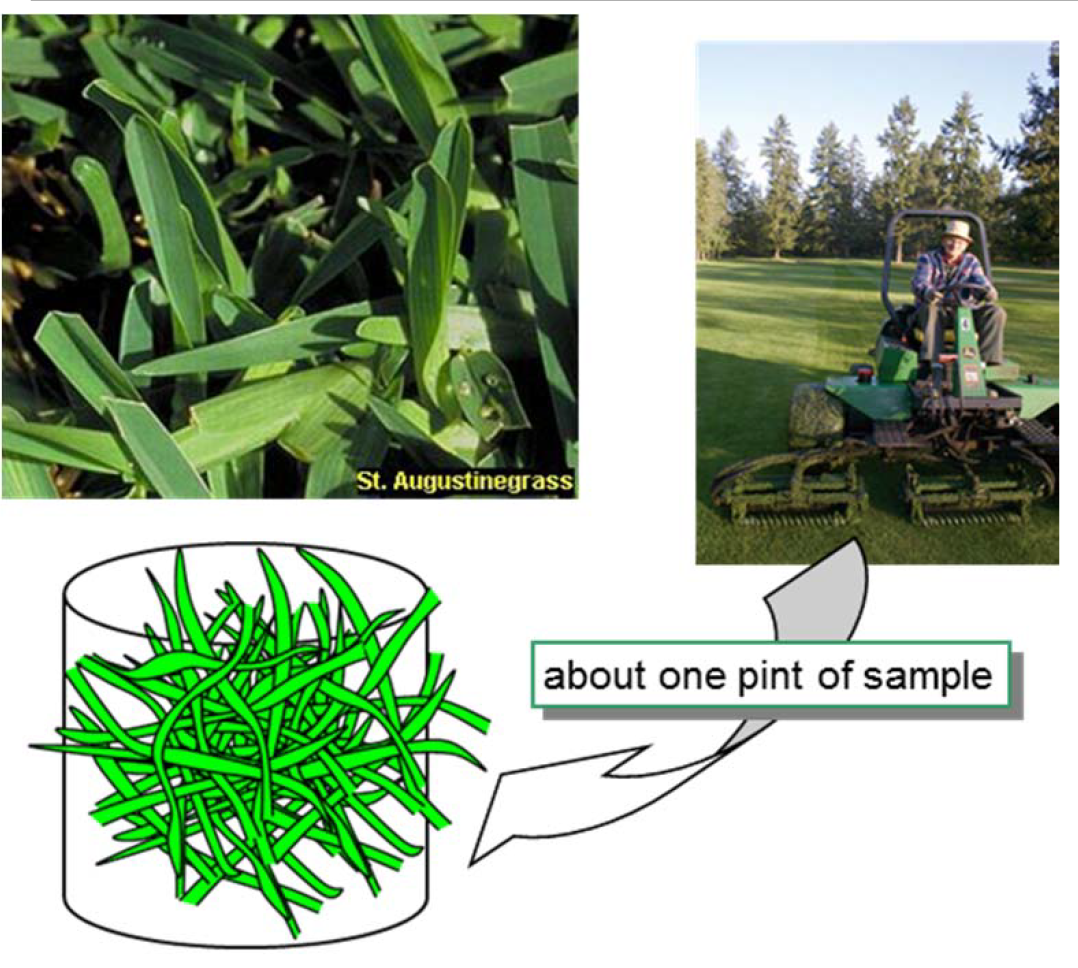⇦ Back to Soil Fertility and Plant Nutrition Home
¶ St. Augustinegrass (Stenotaphrum secundatum)
¶ A: Active growth
Plant Part: Clippings
Sampling Procedure: Remove clean clippings from mower bag. Do not collect samples from turf that has been recently been treated with foliar fungicide or foliar fertilizer. At least a pint of loosely packed tissue (a ball about 4 to 5 inches in diameter) should be submitted for analysis. Place sample in a paper bag, not a plastic bag, for shipment to the laboratory.
| Analysis | Tissue Concentration Guidelines | ||||||||
| Low/Marginal Range | Sufficiency Range | Excessive, toxic? | |||||||
| Nitrogen, % N | 1.70 | - | 1.90 | 1.90 | - | 3.00 | |||
| Phosphorus, %P | 0.15 | - | 0.20 | 0.20 | - | 0.50 | |||
| Potassium, % K | 1.20 | - | 1.50 | 1.50 | - | 3.50 | |||
| Calcium, % Ca | 0.15 | - | 0.20 | 0.20 | - | 0.75 | |||
| Magnesium, % Mg | 0.12 | - | 0.15 | 0.15 | - | 0.40 | |||
| Sulfur, % S | 0.17 | - | 0.20 | 0.20 | - | 0.50 | |||
| Zinc, ppm Zn | 15 | - | 20 | 20 | - | 50 | |||
| Iron, ppm Fe | 50 | - | 80 | 80 | - | 300 | |||
| Manganese, ppm Mn | 20 | - | 40 | 40 | - | 250 | |||
| Copper ppm Cu | 4 | - | 6 | 6 | - | 20 | |||
| Boron, ppm B | 5 | - | 7 | 7 | - | 20 | |||
| Nitrogen-to-sulfur ratio (N:S) | 16 | - | 20 | 12 | - | 16 | 8 | - | 12 |
| Sodium, % Na | |||||||||
| Chloride, % Cl | |||||||||
| Nitrate, ppm NO3-N | |||||||||
| Phosphate, ppm PO4-P | |||||||||
¶ Figure A.

Note: Interpretations are based the relationship between nutrient levels in a particular part of a "standard" tissue in a specific time in the growing season. These plant tissue ranges and interpretations are not considered valid with plant parts or growth stages other than those specified. These interpretations are developed from data collected across a wide range of geographic, soil, and climate conditions.
Results from a single sample may be affected by time of day, climatic conditions, plant stress, age, or disease, that are not directly related to fertility status. Nutrient concentrations are not uniform throughout the plant and may change as the tissue matures.
Tissue analysis trends should be evaluated by variety, growing season, and yield/quality goals.The best use of diagnostic tissue analysis is to compare affected plants with healthy plants growing under the same conditions. Collecting plant samples from the same location as soil samples allows comparison of soil nutrient availability with plant nutrient status.
Low nutrient levels may be due to deficiency or to dilution by intensive growth. High or excessive nutrient levels may be a sign of restricted growth allowing nutrients to accumulate in the plant tissue. Nutrient imbalance may be secondary to the primary problem.